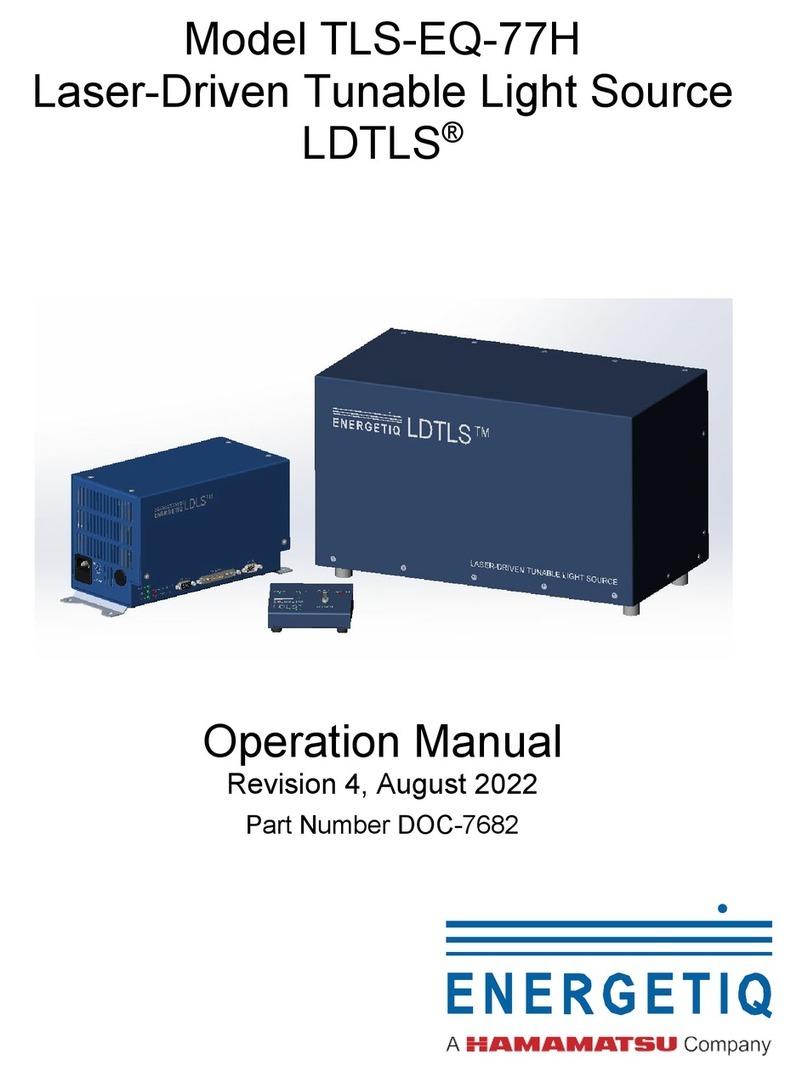Table of Contents
1. Introduction ............................................................................................................................................1
2. Safety instructions..................................................................................................................................1
2.1. General Precautions .....................................................................................................................1
2.2. Definition of equipment and document symbols and designations...............................................2
2.3. Laser Information ..........................................................................................................................3
2.4. Labels and Safety Notification.......................................................................................................4
2.5. Safety Interlocks............................................................................................................................5
2.6. External Interlocks.........................................................................................................................5
2.7. Correct disposal of the unit ...........................................................................................................5
3. Preparation of System ...........................................................................................................................5
3.1. Unpacking guide ...........................................................................................................................5
3.2. System Description .......................................................................................................................6
3.3. Physical Specifications..................................................................................................................8
3.4. Utility requirements .......................................................................................................................8
3.5. Remote Interface...........................................................................................................................8
3.6. External interlock connection ........................................................................................................8
4. EQ-77 Setup ..........................................................................................................................................9
4.1. Connections ..................................................................................................................................9
4.1.1 Electrical Power.........................................................................................................................9
4.1.2 Purge Gas.................................................................................................................................9
4.1.3 Cooling Water............................................................................................................................9
4.1.4 Optical Interface......................................................................................................................10
4.1.5 Signal Connections .................................................................................................................10
4.1.6 Lamp House I/O......................................................................................................................11
4.1.7 RS-485 Interface.....................................................................................................................11
4.2. Installation Procedure .................................................................................................................11
4.3. Chiller Information.......................................................................................................................12
5. EQ-77 Operation..................................................................................................................................12
5.1. Startup.........................................................................................................................................12
5.2. Stopping......................................................................................................................................13
6. Service Requirements..........................................................................................................................13
7. Troubleshooting Guide.........................................................................................................................13
7.1. Fault Indicator Block Diagram.....................................................................................................13
8. Accessories..........................................................................................................................................14
9. Warranty ..............................................................................................................................................14
10. Appendix .........................................................................................................................................15
10.1. Dimensional Drawings ................................................................................................................15
10.1.1 Controller Dimensional Drawings........................................................................................15




























